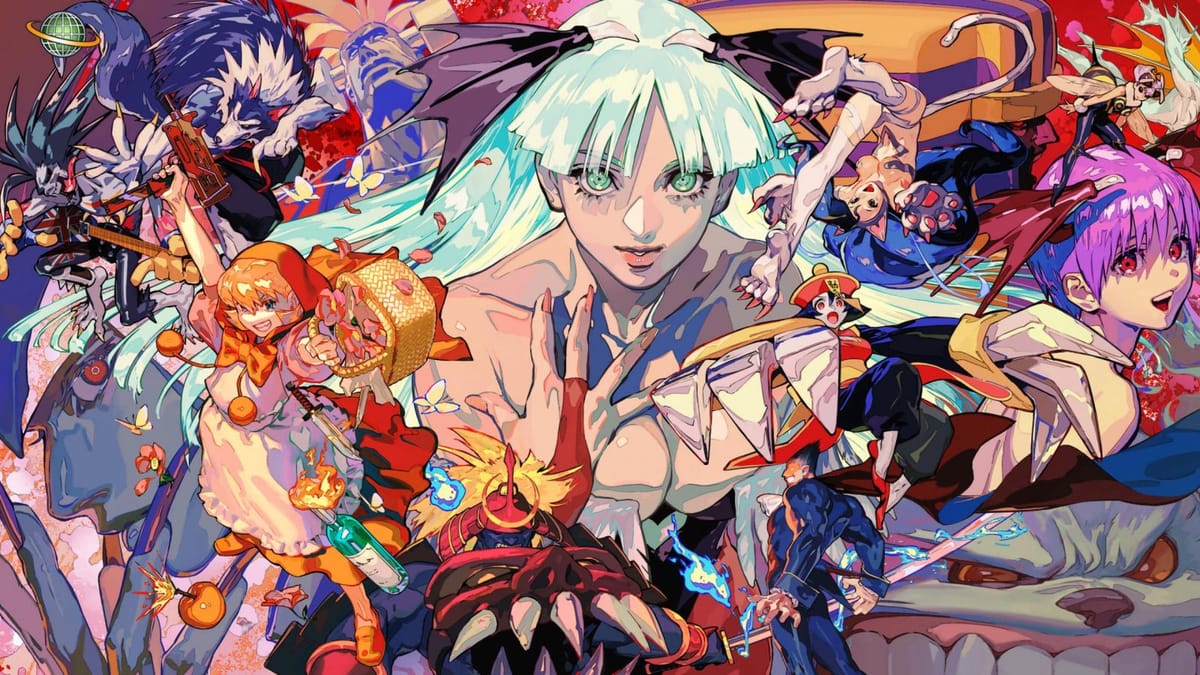
There are a ton of fighting games out there, but who knows how many have been lost to time thanks to the death of arcades? One of the biggest developers of fighting games out there is Capcom, and they’ve certainly gone above and beyond in efforts to make certain parts of their history accessible – mostly Street Fighter. Capcom Arcade Stadium is a great assortment of their more general arcade library, complete with platformers, Beat-em-ups, and even some of the bad games like Ghosts and Goblins. It’s a great package, though with a little extra fluff that I always appreciate in compilations. In what I can only assume is an effort to outdo themselves, Capcom has released the Capcom Fighting Collection – a package containing 10 fighting games straight from the arcades – and I can confidently say they’ve set the new standard of what the ideal compilation looks like.
First up, let’s talk about the games themselves. These are the Arcade releases, not home ports of any kind, so each game essentially has two modes: arcade (yes the terminology is confusing, but this is basically a series of fights with a short ending for your chosen character) and multiplayer. The ten games are as follows: Darkstalkers: The Night Warriors, Night Warriors: Darkstalkers’ Revenge, Vampire Savior: The Lord of Vampire, Vampire Hunter 2: Darkstalkers’ Revenge (JP only), Vampire Savior 2: The Lord of Vampire (JP only), Cyberbots: Fullmetal Madness, Super Puzzle Fighter II Turbo, Super Gem Fighter Minimx, Hyper Street Fighter II: The Anniversary Edition, and finally Red Earth. We’ll go over each game in order, so strap in – though this won’t take as long as it looks.
Half of the games on that list are Darkstalkers games, which isn’t a complaint as Darkstalkers is my favorite fighting game series. Darkstalkers: The Night Warriors is the most basic of the bunch with only 10 characters and a more limited pool of moves. This is where it all began, however, with iconic characters like Morrigan, Felicia (my main), and Jon Talbain, presented in a gorgeous pixel art style that only gets better as the games progress. Despite its comparative rudimentary gameplay, I’m very glad it’s here for the sake of preservation and to see just how far these games came in their relatively short lifespan.
Night Warriors: Darkstalkers’ Revenge is a small step forward. It’s a bit faster and adds more characters while making the gameplay feel a whole lot better and smoother. This is a direct sequel, with the main addition being that you can now stock multiple meters for supers. You can either use them immediately or save up a few to use in succession, it’s a lot of fun. I also really like the style of this one, Darkstalkers was originally supposed to be a Universal Monsters fighting game (i.e. Dracula, Frankenstein’s monster, the mummy, etc.) and the characters, particularly in their portraits, look a lot more menacing and monstrous here. This is also the game the OVA is based on, which is a good watch if you haven’t seen it before. Revenge builds on the original nicely and gives the Darkstalkers more unique gameplay to go with the style.
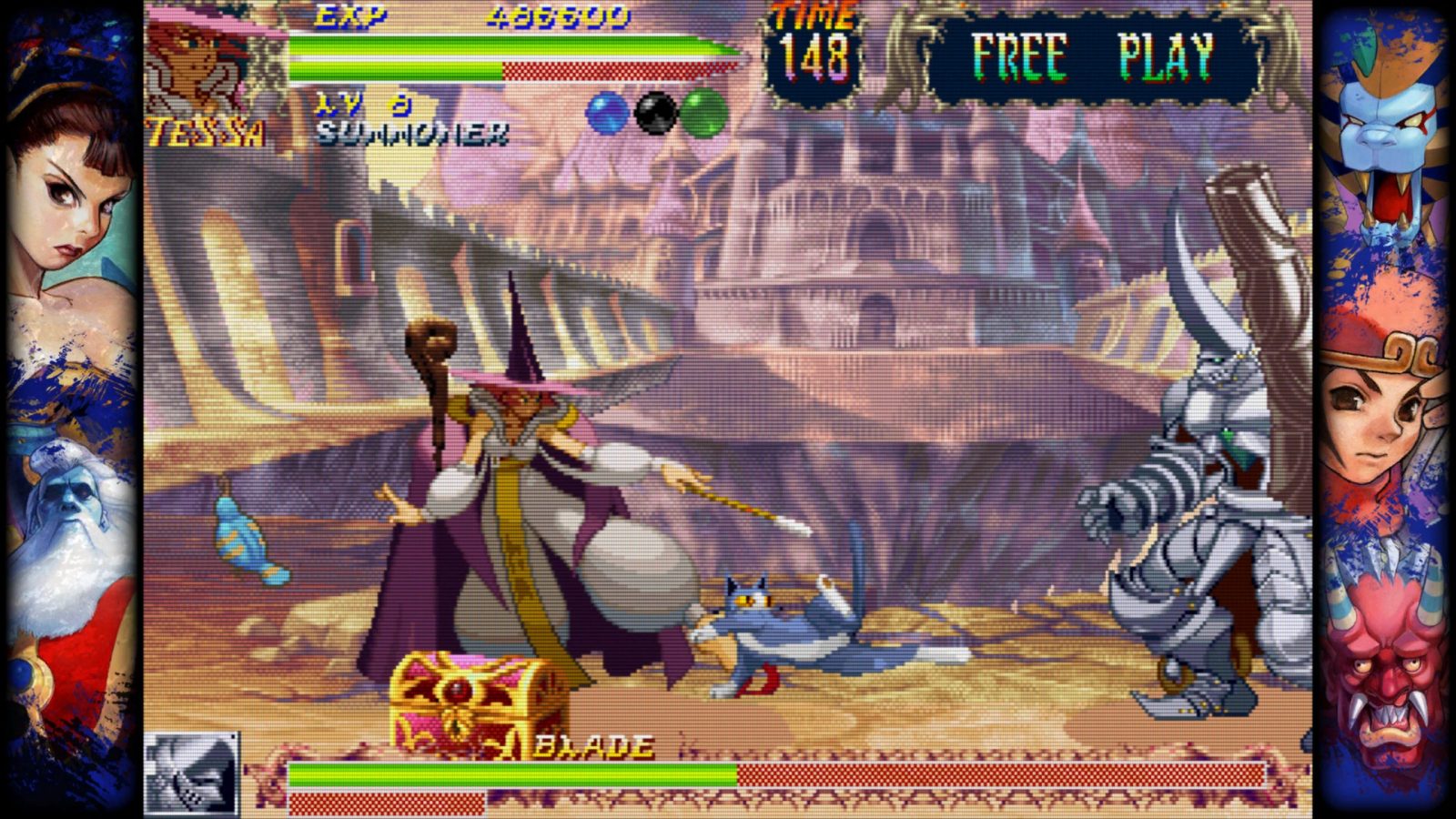
The third and, so far, final game in the series is Vampire Savior: The Lord of Vampire or simply Darkstalkers 3 because that’s a mouthful. This is where the gameplay really starts to pop off, with what’s called the Damage Gauge System. Usually in fighting games, when one character’s life bar is depleted things reset for the next round – everyone is brought back to full HP and both start again in center stage. Here, however, if you’re knocked out the match just keeps going; your HP is refilled and you get back up but your opponent may still have another stock left in them, so to win you need to kill them twice for example. Darkstalkers 3 also introduced Dark Force. These are unique moves that function differently with each character. For example, Felicia summons a small cat girl who will occasionally attack, while Q-Bee starts flying and can attack at any height. These only last for a short time, but they’re very interesting and force you to stay on your toes the whole match.
Vampire Hunter 2: Darkstalkers’ Revenge and Vampire Savior 2: The Lord of Vampire are Japanese only updates to their respective games. There are a ton of changes, both larger and more minute, including characters returning from previous games, added secret characters, differences with mirror matches, and more. I do wish the collection described what differences there are, but generally unless you want to read the arcade mode story you should stick with the updated versions for gameplay and roster improvements.
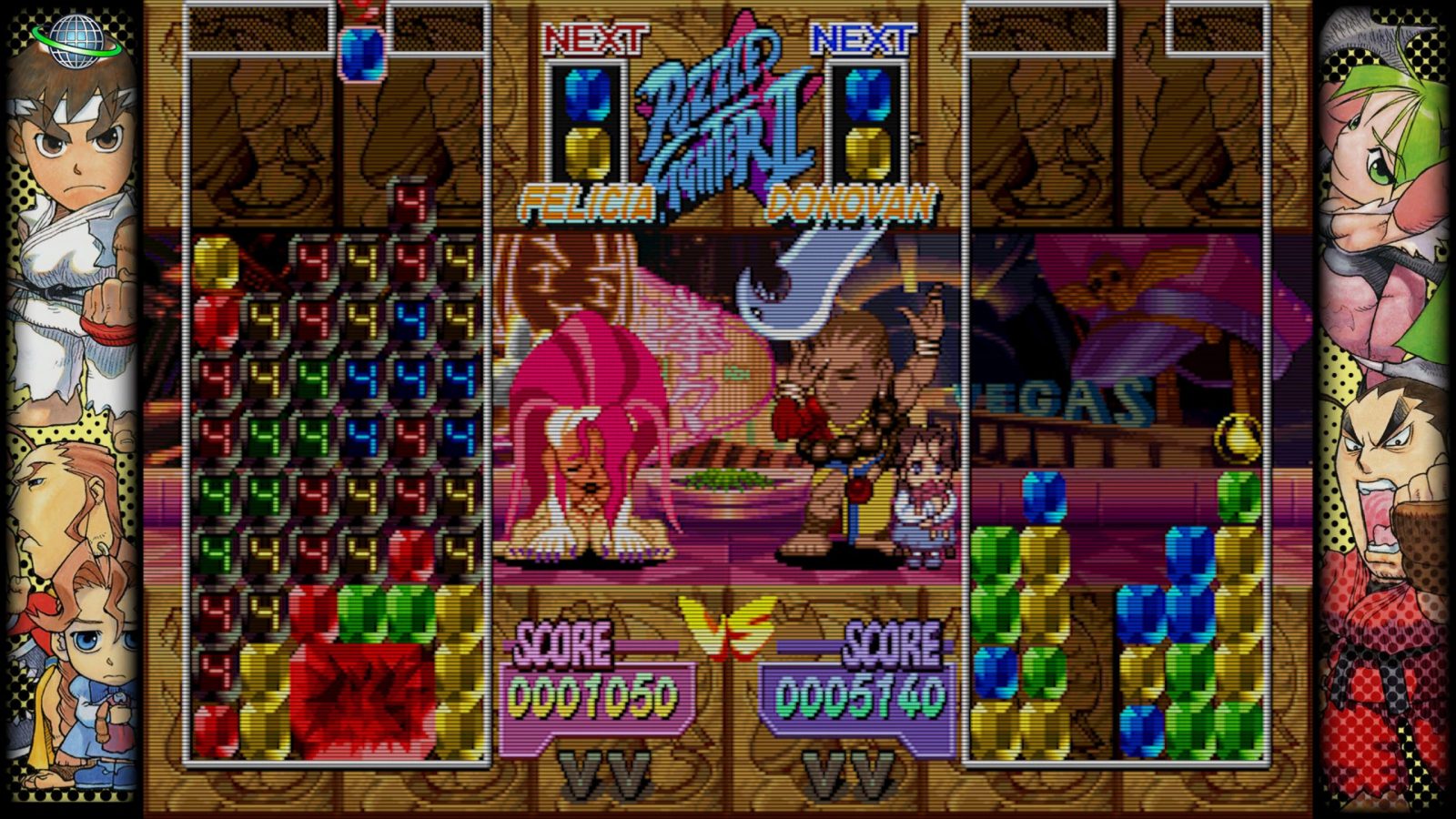
Cyberbots: Fullmetal Madness is next, and it’s certainly a weird one. There are only six characters, but each character can choose from one of twelve robots to actually fight in. I don’t claim to fully understand the gameplay from my time with it so far, but the character seems to be mostly cosmetic while the robot is the pick that determines how you play. It’s an interesting, fast paced fighter with cool robots, what else is there to say?
So Super Puzzle Fighter II Turbo isn’t exactly a fighting game. Yes it retains a one on one format, but instead of duking it out you’re playing a puzzle game against each other. Gems fall down from the top of the screen in 1:2 format, you can move the gems left and right as well as turn them. The idea is you want to create chains of gems horizontally and vertically to destroy them all at once with a Crash Gem for a bunch of points. You can of course set up chain reactions if you’re careful and plan ahead, but you may be thwarted by an opponent sending some junk your way before you can execute. To win each match, you need to balance between setting up combos and actually destroying gems. It’s a lot of fun and super rewarding when you learn how to turn a match around at the last second with a massive chain. Puzzle Fighter gets the feeling of fighting games across without requiring you to learn specific characters or complex inputs.
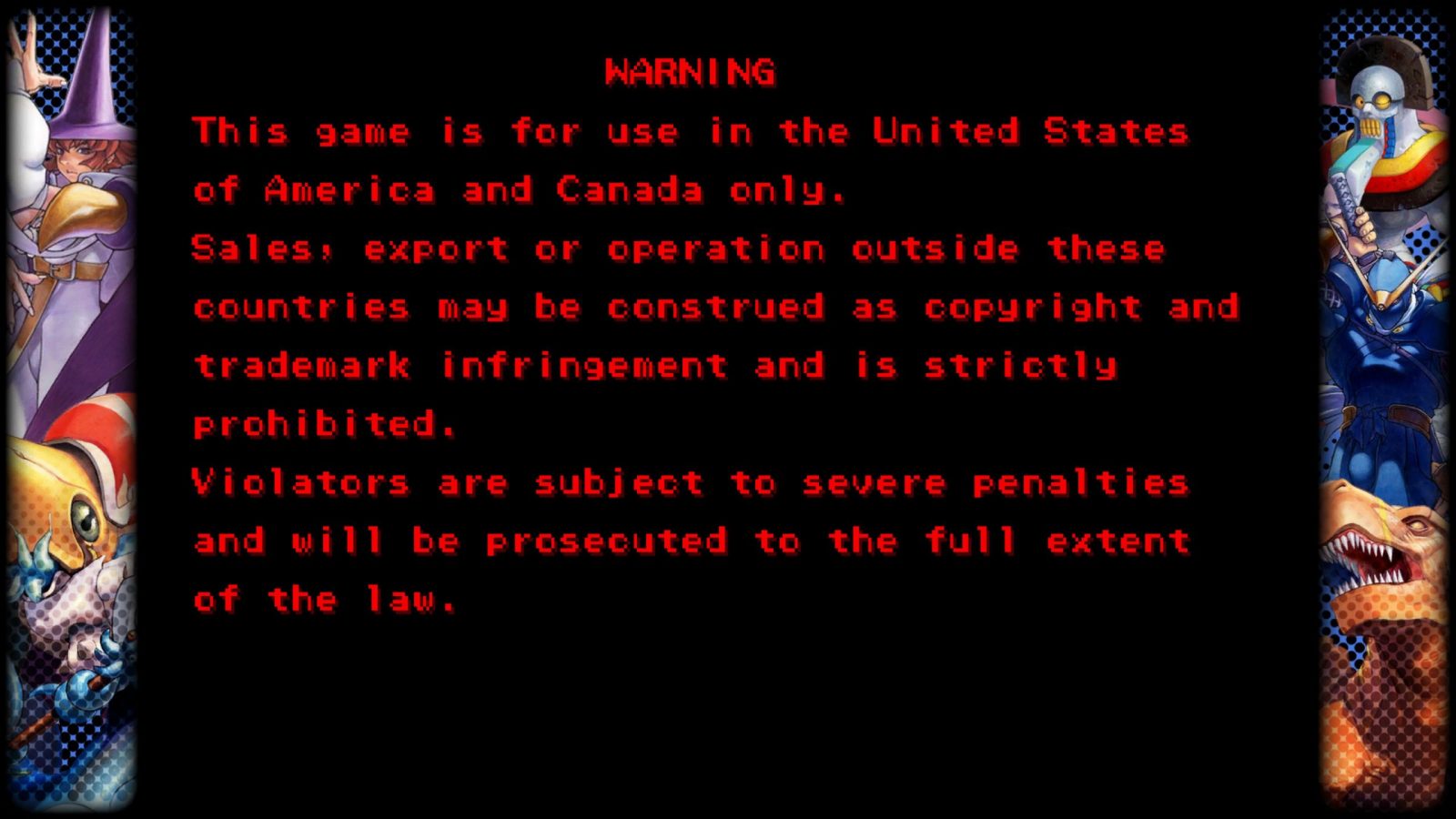
Super Gem Fighter Minimix is sort of a middle ground between traditional fighting games and Puzzle Fighter. It keeps the chibi, cartoon art style and the Darkstalkers x Street Fighter crossover going to adorable effect while adding in some complexities of traditional fighters. For starters, while you can mash any of the two attack buttons to perform combos, the special moves here are what really sets each character apart. On top of that, you can level up certain moves by collecting gems on the battlefield, making for a very hectic and oddball game.
Rounding out the list, we have Hyper Street Fighter II: The Anniversary Edition, a game which needs no introduction because you’ve definitely played it in one form or another, and Red Earth for the first time outside of arcades. Red Earth is unlike any other fighter I’ve played because it feels mostly focused on the single player. In Arcade mode, you pick one of four gorgeously rendered characters to play through the campaign with and level up. Each fight you face off with a special boss character rather than another playable fighter, with matches rewarding you with experience points to unlock more moves as you level up. It’s really interesting to bring the depth a fighting game possesses to a more single player experience, and it’s clear this game was also showing off some cool new tech with gigantic, highly detailed sprites that look completely natural next to some more rudimentary 3D models. I’m not sure I’d want to regularly play this against other people as the move pool is pretty small, but the arcade mode is a lot of fun to quickly run through.
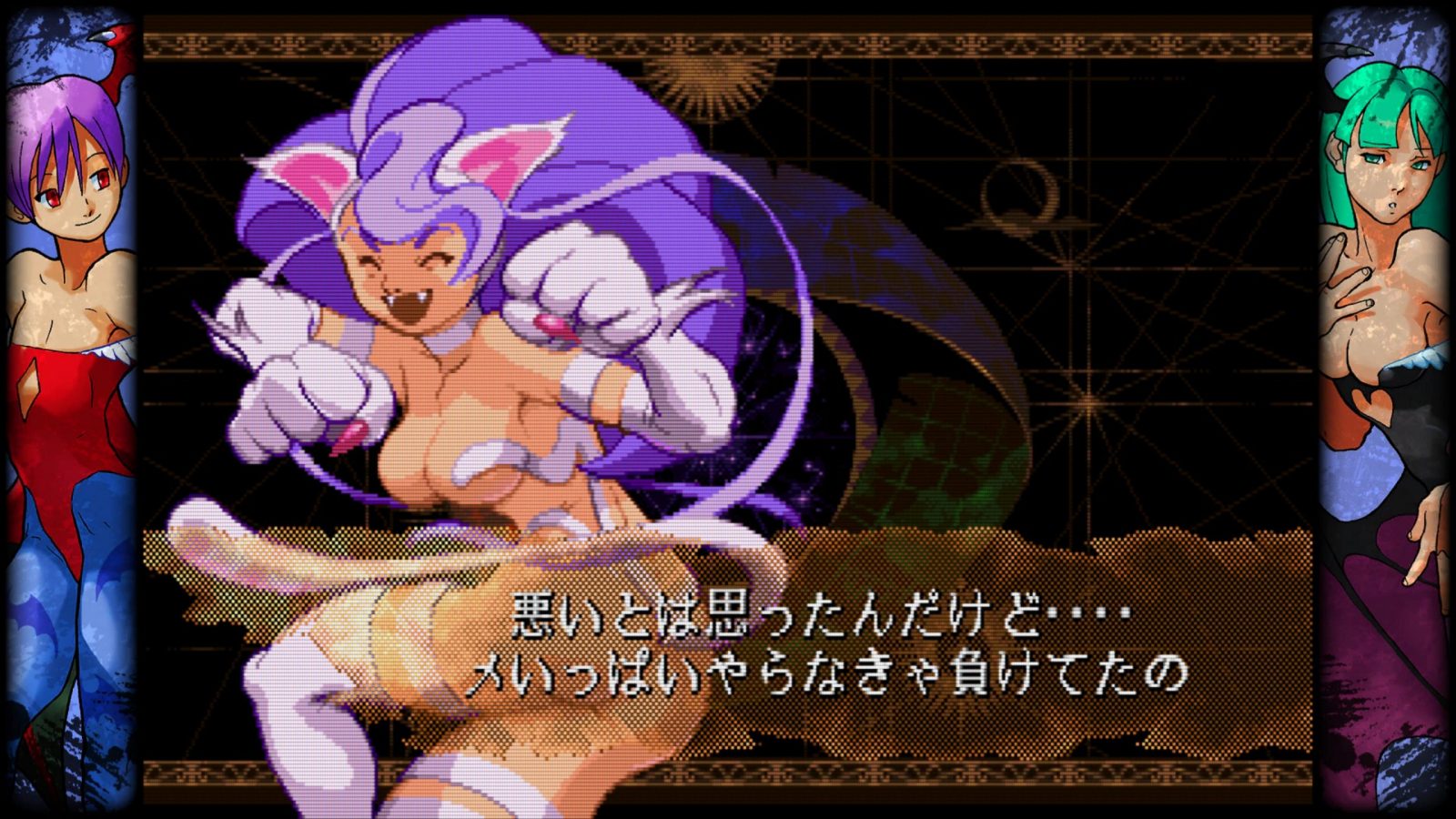
Now that we’ve covered the games, let’s go into the options surrounding them. Capcom Fighting Collection has a graffiti aesthetic for menus that looks really classy, modern, and unifies all the games under one art style somehow. Before selecting a game in Offline Mode, you can press Square to change up some options such as the difficulty, adjust the number of rounds or lives, turn off graphic content, or even enable the Boot Display which is a warning that would show up when you turn on the arcade cabinet. You really have all your bases covered here and I love how thoroughly you can customize the experience, especially since most of these games have computers that literally cheat to squeeze those quarters out of you.
Once you’re in the game, you can press the touch pad to check move lists, adjust controller settings, change visual and sound options like borders of music volume, and even make quick saves. Once again, I appreciate how robust the options here are, especially since they all allow you to map more complicated inputs for special moves to simply holding a direction and pressing a button. Even the borders are nice because they don’t take up too much space and are generally darker than the game image. I do wonder why we need two options menus though, and would prefer if both could be accessed both in and out of the game even if some would require a reboot of that particular game. Sadly there is also one quick save slot total, so you can only save your progress in a single game. That’s just kinda stupid, and I don’t see why this limitation exists on modern hardware.
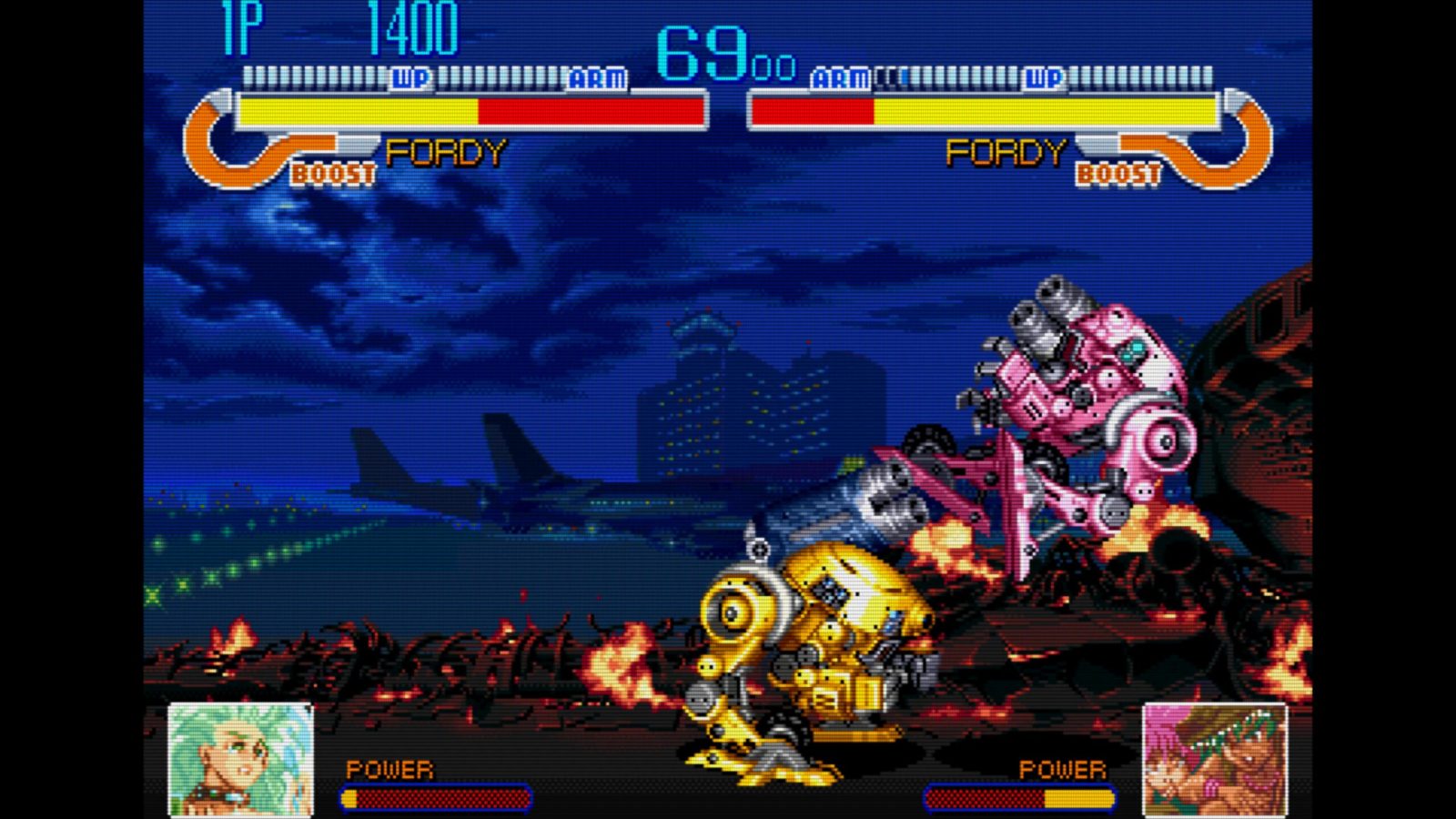
Outside of playing the games, the Museum is filled to bursting with promotional materials, concept art, manuals, design documents and more for every single game in the collection. Most games would settle just for concept art, but no here we even have some notes developers drew way back when on graph paper to specify how animations should look and even early designs for the characters. It’s a treat to see all of this as a game developer and fan and I’m so glad this has been preserved digitally here. Red Earth in particular has a ton of rough sketches that are fun to look at and see how they translated to the final product.
On top of that, you can listen to the soundtrack of each title along with some funky original tracks specifically for this collection which are all so good I wish I could listen to them while playing the games. There’s a nice focus on hip-hop that really works for the style they’re going for, along with some great guest compositions. They really went above and beyond here to somehow make this one of the best original OSTs of the year for me.
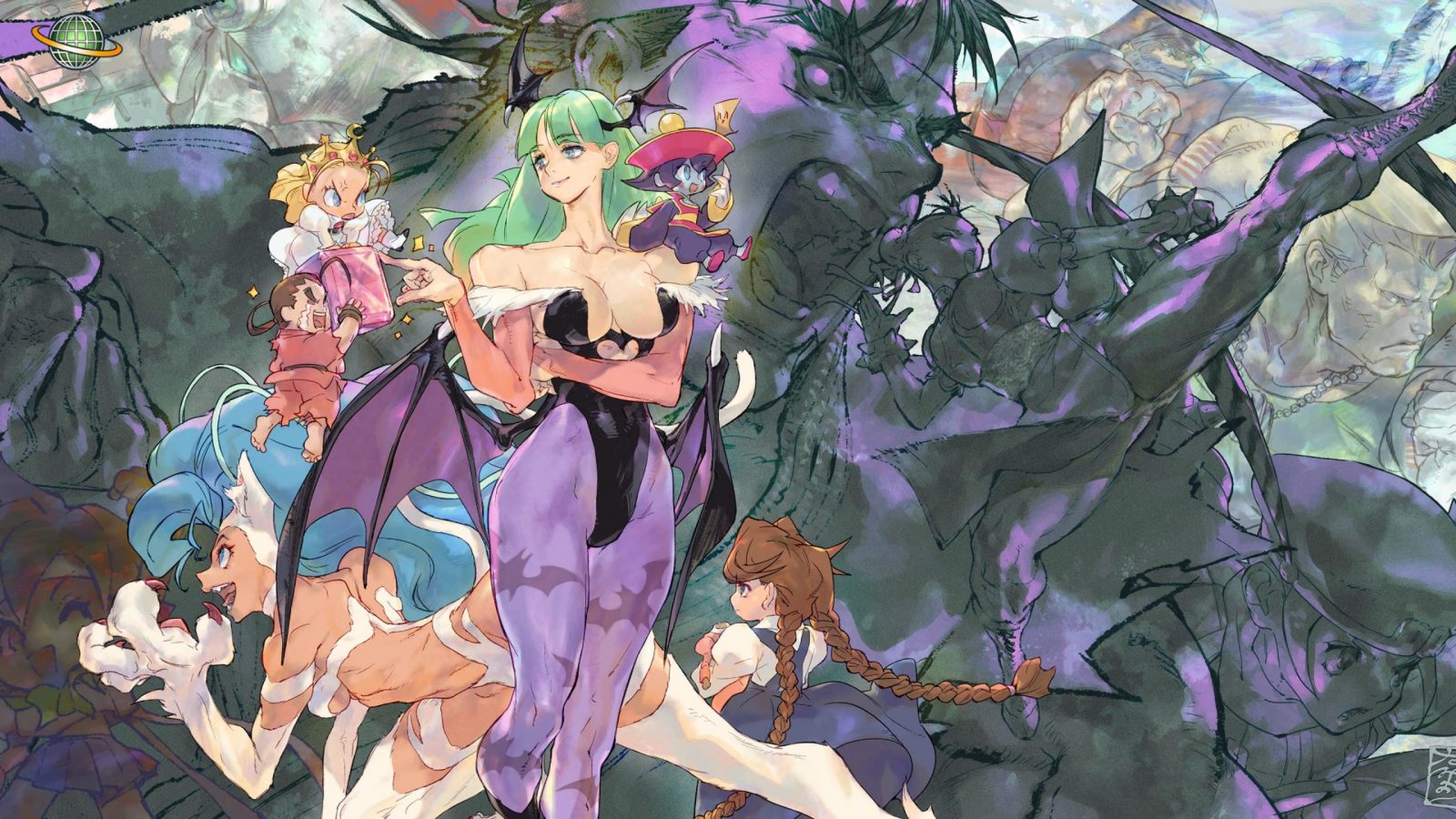
And now, the moment you’ve been waiting for, you can play all of these titles online with rollback netcode! While my first match was super laggy, I think I can chalk that up to my bad internet connection as afterwards every single match was so buttery smooth it felt like I was playing against someone in the same room or standing at the same arcade cabinet. You can select multiple games to search for a match in and even disable one-button special moves if you’ve got something dexterous to prove. I would recommend you adjust your input delay a bit though, as 4 frames was a bit too high for my liking.
Capcom Fighting Collection
Excellent
Capcom Fighting Collection sets the new standard all compilation games should be held to. There are a ton of games, though some may complain too many of them are Darkstalkers, accompanied by a suit of wonderful art and music. To top it all off is the fantastic online play and great visual and auditory presentation wrapping it up.
Pros
- 10 great games
- Tons of options
- Online play is fantastic
Cons
- Most of the games are Darkstalkers
- Options menus feel needlessly separated
- Only one quicksave slot
